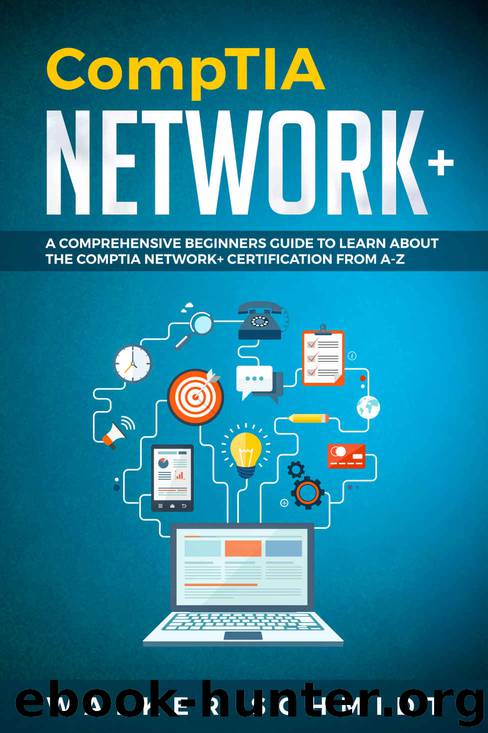CompTIA Network+: A Comprehensive Beginners Guide to Learn About The CompTIA Network+ Certification from A-Z by Walker Schmidt

Author:Walker Schmidt [Schmidt, Walker]
Language: eng
Format: epub, azw
Published: 2019-04-19T05:00:00+00:00
Types of addresses
Broadcasts are one of the key definitive features in IPv4. However, considering the fact that broadcasts are responsible for a lot of network inefficiencies, they were eliminated in IPv6. The following are the key methods of communication in IPv6:
● Unicast
In this form of communication, all the data packets meant for a unicast address are sent to one interface. Considering the possibility of flooding the interface, the interface address can be shared with more than one device. This will help in balancing the traffic load.
● Link local addresses
Link local addresses operate in the same way that IPv4 manages private addresses. These addresses are not designed for routing. The benefit of using link-local addresses is that you can use them to configure a temporary or random LAN whenever necessary, perhaps to host a meeting for some small task that does not need to be routed, but can still have access to local services and files.
● Global unicast addresses
Global unicast addresses are routable and public. They operate the same way in IPv6 as they do in IPv4.
● Unique local addresses
Unique local addresses are also built for non-routing needs. However, they are designed for global use. Considering the global approach, it is highly unlikely that you will ever come across any unique local address overlapping with another. Unique local addresses are designed to support communication on one site while at the same time allowing you to route the communication to a variety of LANs.
● Anycast
Anycast addresses will identify several interfaces to which they can communicate. However, they communicate by diverting packets to a single address. The address to which the packets are delivered is often the closest IPv6 address the packets encounter, considering the routing distance.
● Multicast
Multicast communication is a situation where data packets are transmitted to different interfaces, each of which is identified according to their multicast address. All multicast addresses in IPv6 must begin with FF.
Download
CompTIA Network+: A Comprehensive Beginners Guide to Learn About The CompTIA Network+ Certification from A-Z by Walker Schmidt.azw
This site does not store any files on its server. We only index and link to content provided by other sites. Please contact the content providers to delete copyright contents if any and email us, we'll remove relevant links or contents immediately.
Grails in Action by Glen Smith Peter Ledbrook(9163)
Sass and Compass in Action by Wynn Netherland Nathan Weizenbaum Chris Eppstein Brandon Mathis(8808)
Azure Containers Explained by Wesley Haakman & Richard Hooper(7444)
Configuring Windows Server Hybrid Advanced Services Exam Ref AZ-801 by Chris Gill(7433)
Kotlin in Action by Dmitry Jemerov(7263)
Running Windows Containers on AWS by Marcio Morales(6984)
Microsoft 365 Identity and Services Exam Guide MS-100 by Aaron Guilmette(5402)
Microsoft Cybersecurity Architect Exam Ref SC-100 by Dwayne Natwick(5212)
Combating Crime on the Dark Web by Nearchos Nearchou(4982)
The Ruby Workshop by Akshat Paul Peter Philips Dániel Szabó and Cheyne Wallace(4670)
Management Strategies for the Cloud Revolution: How Cloud Computing Is Transforming Business and Why You Can't Afford to Be Left Behind by Charles Babcock(4527)
Python for Security and Networking - Third Edition by José Manuel Ortega(4233)
The Age of Surveillance Capitalism by Shoshana Zuboff(4209)
Learn Wireshark by Lisa Bock(4119)
The Ultimate Docker Container Book by Schenker Gabriel N.;(3888)
Learn Windows PowerShell in a Month of Lunches by Don Jones(3681)
DevSecOps in Practice with VMware Tanzu by Parth Pandit & Robert Hardt(3568)
Windows Ransomware Detection and Protection by Marius Sandbu(3541)
Blockchain Basics by Daniel Drescher(3507)
